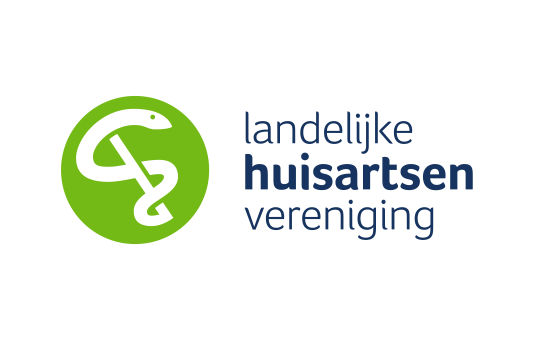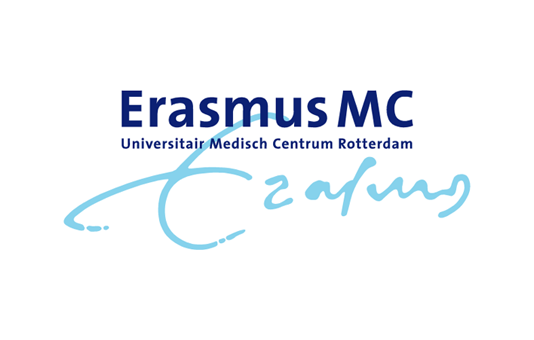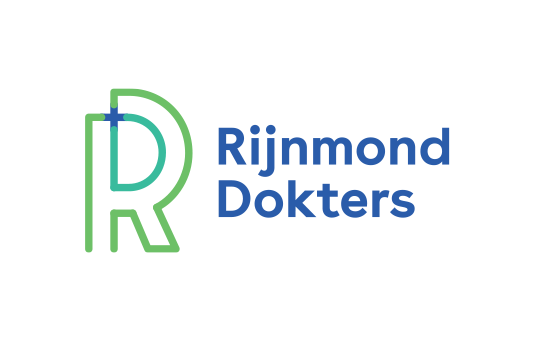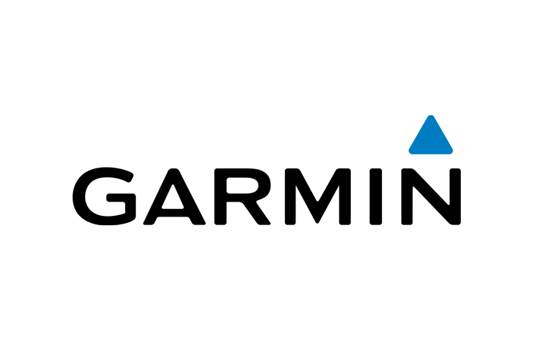Erasmus M.C. onderzoek
A pedometer: a helpful tool for the General Practitioner?

Samenvatting / Summary
Objective: To investigate the effectiveness and cost-effectiveness of using a pedometer (intervention) compared to usual care (control) in patients with chronic MSD from general practice (with and without comorbidities) to decrease complaints and increase physical activity, physical function, and quality of life.
Design: A pragmatic cluster randomized controlled trial with a one-year follow-up period.
Population: Patients who or registered with or consulting their GP because of chronic MSD are eligible. Patients who are unable to understand Dutch questionnaires will be excluded.
Procedure: Participating GPs will be randomized to either the intervention group or the control group. Eligible patients registered at the GP and/or consulting their GP because of chronic complaints of the musculoskeletal system will be asked to participate and when willing included and treated according to their GP’s treatment group. After signing informed consent, all patients receive a link to the baseline questionnaire assessing: a) patient characteristics (e.g. age, gender, education), b) complaint characteristics (e.g. patient specific complaint (PSC), pain severity, duration of complaints), c) co-morbidities, musculoskeletal or other (e.g. diabetes, cardiovascular illnesses), physical activity, and quality of life, d) psychological characteristics (e.g. beliefs about physical activity).
Intervention: GPs in the intervention group will refer the included patients to a nurse specialist for personalized physical activity advice and a pedometer. Patients will consult the nurse specialist three or four times in the first three months for personalized advice and feedback on their daily activity and how to improve it. To stimulate the patients a pedometer will be provided. To guide the nurse specialist in consultation she/he has access to the pedometer outcome.
Control: GPs in the usual care group will treat the patients as usual including advice on physical activity. A protocol for usual care (based on current clinical guidelines) will be provided to participating GPs.
Primary outcome: the patient specific complaints (PSC) at three month.
Secondary outcome: PSCatoneyear, physicalactivity(RecentPhysicalactivityQuestionnaire),physicalfunction,qualityoflife (EQ-5D) and cost-effectiveness using direct costs (iMCQ) and productivity costs (iPCQ) at one year. Furthermore, patients, GPs and nurse specialists experiences will beinvestigated.
Sample size: To detect a clinically relevant difference in PSC of 1.3 points between the two treatment groups with an effect size of 0.5 (power 80%; alpha 0.05), taking into account the cluster randomization with an assumption of 3 patients per GP and an intra-cluster correlation coefficient of 0.01, we will require 68 patients per treatment group. As we expect around 10% loss to follow-up, we need to include 150 patients in total (2×75).
Data-analysis: Analysis for the primary outcome will be performed following the intention-to-treat principle. For clinical effectiveness the between group differences will be analysed using linear mixed models with repeated measurements using the primary outcome patients’ specific complaints (PSC). To evaluate cost-effectiveness of the intervention versus the usual care in patients with chronic MSD we will perform a cost-effectiveness analysis using the primary outcome.
Trefwoorden / Keywords
‘General practitioner’; ‘Activity monitor’; ‘ chronic musculoskeletal disorders’; ‘physcial activity’; ‘advice’
Probleemstelling / Problem definition
Musculoskeletal disorders (MSDs) are in the top 10 of consultation according to the primary care registry in the Netherlands(1). MSD are a modern epidemic as they are the second most common cause of pain and disability worldwide, measured by years lived with disability, resulting in 166 million years lived with disability worldwide(2-5). More specifically, out of 291 diseases studied in the 2010 Global Burden of Disease study, four MSD were within the top 11: low back pain (first), neck pain (fourth) and osteoarthritis (OA) (11th) and other MSD (8th) (2). In the future, the prevalence of MSD will increase due to an increasingly obese, sedentary and ageing population(6).
Although MSD can be a barrier for being physically active, there is an indisputable amount of evidence that regular physical activity contributes to a reduction in pain severity, a positive influence on general health status, physical fitness, psychosocial health, and is associated with reduced risk of incidence health problems and premature death(7-9). Greatest improvement in health status is seen when patients who are least fit become physically active (7, 10-12).
Core element of the advice for patients with MSDs according to the guidelines for GPs is to stay physically active and do exercises(13). Until now, the evidence of the effectiveness of the physical activity for MSD is of low quality(14), and effects are mostly small to moderate (15).
Literature provided clear evidence of small but positive effects of physical activity interventions on increase of physical activity in primary care settings (16-18). A systematic review showed that using pedometers increased physical activity by 26.9%, and decreased body mass index and blood pressure(16). The review also found that an important predictor of increased physical activity was having a step goal, such as 10.000 steps a day(16). Another meta-analysis showed that the overall mean effect
size of increase physical activity using a pedometer is 0.68 (95% CI: 0.55 to 0.81), which indicates that pedometers are a useful motivational tool to increase physical activity(19).
In the Netherlands the recommendation for physical activity has been adapted very recently (august 2017) to a minimum of 150 minutes a week (on several days) of moderate intensity physical activity, such as walking or cycling(10). Multiple dose-response studies showed that there is no risk in being several times more active than the recommended amount(11, 12). In an on-going qualitative study all interviewed general practitioners (GPs) considered it important and their responsibility to provide patients with physical activity advice, but they mentioned reasons why they sometimes failed (20). Main reasons were lack of time, and lack of motivation of patients. Almost all GPs indicated that the nurse specialist could give the personalized advice and monitor the physical activity even better than the GP him/herself(20).
Time is an important issue in the consultation of GPs. Recently the effectiveness, feasibility, acceptability and costs of very brief interventions (around five minutes) have been investigated in a pilot study in primary care(18). The aim of these interventions was to increase physical activity in primary care patients. They found that a very brief intervention with the use of a pedometer was possibly effective (posterior probability of a positive effect was 73%), feasible (mean duration 5min), acceptable and low in costs (£17,- per patient)(18).
Besides the physical barrier of chronic MSD, other factors influence physical activity behaviour, such as education, psychological and environmental factors(21). These factors need to be taken into account when giving physical activity advice. The report physical activity in care (‘Zorgmodule Bewegen’) describes different patients profiles and accordingly a personalized advice using the stage-of-change model (22). In addition to the personalized advice, the pedometer might be a nudge for starting to change the physical activity behaviour(23, 24).
Although co-morbidity could be another barrier for patients to be physical active, a physical activity advice should take these co-morbidities into account. Physical activity can be adapted in duration, frequency and/or intensity to guarantee safety(25). It is unknown whether an intervention with a pedometer is effective in reducing complaints in patients with chronic MSD.
Therefore, the objective of this proposal is to investigate the effectiveness and cost-effectiveness of using a pedometer combined with physical activity advice (intervention) compared to usual care (control) in patients with chronic MSD from general practice (with and without comorbidities) to decrease their complaints and increase physical activity, physical function, and quality of life. A second objective is to evaluate the barriers and facilitators of the intervention in general practice for the possibility of implementation in general practice.
Relevantie / Relevance
Two pilot studies at our department using a pedometer have started last year. Both pilot studies were initiated by GPs themselves. These GP initiatives show the relevance and importance for a general practice based project with pedometers to enhance the physical activity strategies.
In one of the first pilot study the objective is to investigate if the pedometer can be a useful tool for the GP to achieve a change in physical activity behavior of patients and if how tool best can be for the GP in their consultation. Nine GPs are included in the ongoing pilot. Some GPs suggested that the nurse specialist could do the supervision of the patients. Most GPs are enthusiastic about it, and suggested that it would be an improvement if the outcome of the pedometer could be automatically read into their information system, so they can use it directly in consultation.
As a part of the master in musculoskeletal disorders for GPs, the other GP initiated pilot started. In this pilot the objective was to investigate if giving a pedometer in combination with motivational interviewing could result in a measurable better mobility and an improvement in self-reported general health. This pilot started in ten GP practices and showed that more than one third of the patients improved their mobility and were more physically active. Furthermore, patients reported an improvement in self-reported general health.
These pilot studies show the relevance and importance for a full scale project to enhance the physical activity advice in GP practice.
Prevalence: The prevalence of chronic musculoskeletal pain measured in a large Dutch study (n=1678) was 39% in men and 45% in women(26). The prevalence of persistent chronic musculoskeletal pain is 25% in men and 32% in women. More specific: almost two million patients have neck and back complaints, and around 1.2 million patients are familiar with osteoarthritis at the GP practice in the Netherlands. These are the three largest MSD conditions in GP practice, which could benefit from physical activity advice.
Treatment:Current treatment for most MSD is a physical activity advice and/or pain medication. GPs stated that they consider it important to give physical activity advice, but often time constraints are limiting a proper explanation of these advices during consultation. According to the GPs, the patients themselves are responsible to start and maintain physical activity. Often, control whether physical activity has increased only occur in patients who re-consult the GP. GPs therefore stated that the physical activity advice could better be given by the nurse specialist. The nurse specialist has more time to motivate and explain the necessity to start physical activity and could ask the patients to revisit the practice for control appointments. The pedometer can give inside in the physical activity of the patient to the nurse specialist and give input for the consultation.
Furthermore, the pedometer can be a nudge to start to change the behavior of the patient(23, 24).
Costs: Besides being an important contributor to the burden of disease, MSD are a crucial component of health expenditure in many high-income and middle-income countries (27). The direct costs for care as a result of insufficient physical activity is estimated at 471 million euro per year (95%CI 232-713). But this estimation is without indirect costs, and therefore an underestimation of the total costs.(28) The indirect costs are 7-10 time higher and concern work-loss and sickness absence. An exploration of costs and benefits of physiotherapy for chronic diseases in the Netherlands found that the benefits (saving on care consumption estimated at €750 per person) were higher than the costs (€500 per person care consumption)(29). For the present proposal, we hypothesize that the benefits will also be higher than the costs.
Kennisoverdracht, implementatie, bestendiging / Knowledge transfer, Implementation Consolidation
Scientific transfer: The results of the proposed project will be published in international peer-reviewed scientific journals. We aim to publish at least four papers on the collected data:
- The (cost-) effectiveness of the intervention on the patient specific complaints (primaryoutcome).
- Identifying potential modifiable baseline variables associated with successful outcome and identifying (interaction) factors for less successful
- Identifying the impact of the beliefs about increasing physical activity in the successful outcome of the barriers and facilitators of this intervention for implementation in GP
In addition the main study outcomes will be presented in Dutch scientific papers (NTvG and Huisarts & Wetenschap) and at both national and international conferences (NHG congress, conference of the Master education ‘musculoskeletal disorders’ GPs, KNGF congress, NAPCGR). Main stakeholders will be informed of the results by these publications and presentations. Transfer to clinical practice: All relevant professionals are represented in the project group of the current proposal: general practitioners, physiotherapist, general practitioner with special interest in MSD (GPwSI MSD). Therefore, a direct link to clinical practice has been made. The knowledge derived from this project will be transferred to health care professionals, but also to patients. In the department of General Practice of the Erasmus MC a Primeur Patient panel (PPP) is active. The patients of this panel discuss the progress of ongoing research and new proposals with the researchers. This panel will be have a active role in all the phases of the research to ensure the clinical relevance of the research for patients.
The ‘kaderopleiding Bewegingsapparaat’ (GP post Master Education Program ‘Musculoskeletal disorders’); organized by our department in Rotterdam, can play an important role towards the implementation of general practitioners. GPs participating in this program have an essential regional role in communicating and implementing new evidence for musculoskeletal GP management for GPs.
Doelstelling / Objective
The purposes of this project are:
- To investigate the (cost-) effectiveness of an intervention with a pedometer at the GP practice in patients with chronic MSD(andcomorbidities)comparedtousualcaretodecreasetheirmusculoskeletalcomplaintsandincreasephysicalactivity, physical function and quality of
- To identify potential modifiable baseline variables that are associated with successful decrease in specific complaints and increase in physical
- To identify the impact of the beliefs about increasing physical activity in the successful outcome of the
- To evaluate the barriers and facilitators of the use a pedometer in GP practice in the Netherlands for the possibilities of implementation in general
Plan van Aanpak / Strategy
Design: A cluster randomized controlled trial with a follow-up of a year in which we will compare two groups. The cluster randomized trial design forms a pragmatic and feasible approach, which mimics true-life practice as much as possible and will help to evaluate the cost-effectiveness of the actual patient care. Furthermore, the cluster-randomized trial has the advantage of avoidance of treatment group contamination above a patient-randomized trial. An important advantage for the GP is that he/ she does not have to explain the process of randomization and ask for permission to randomize for treatment. The GP only has to ask (and explain) whether the patient wants to participate in the study and fill in questionnaires. All patients in the same GP practice will receive the same treatment.
To evaluate the barriers and facilitators of the use of pedometer for the implementation in GP practice a qualitative study will be conducted in a random sample of general practitioners (GPs), nurse practitioners and patients. The sample size will be based on the data collected. When the data is satisfied (no new data is gathered in the last two interviews).
Procedure: Participating general practices will be randomized to either intervention or usual care. They will be allocated according to a randomization list produced by a computer-generated table provided by an independent data-manager. Intervention: The GPs who will be randomized to the intervention group will refer for the intervention to the nurse specialist. The intervention will contain advice about physical activity based on the ‘Zorgmodule bewegen’ (standard care for physical activity). Motivational interviewing is a part of the advice. To determine the correct content of physical activity advice per patient, the current degree of physical activity and fitness will be assessed, the presence of barriers, and comorbidity, and the attitude and opportunities of the patient to independently take and maintain an active lifestyle(22). Furthermore, an explanation about the 10.000 steps per day goal recommendation, an explanation about goal setting, information about tips and tricks for increasing the number of steps will be given. In addition, the patients will be given a pedometer (with instructions how to use the pedometer), including an app, and the referral to the website of ‘Looprecept’. ‘Looprecept’ is a website with information, tips and tricks and experiences of patients to get physical active for patients. The pedometer outcome can be used in the consultation with the nurse specialist and could be a nudge for patient to start to change their behaviour.
Control: the control group will receive care as usual including a physical activity advice based on current national MSD guidelines. A summary of the recommendations for physical activity will be given to all GPs. Furthermore, the GPs will be asked how they usually give physical activity advice.
Subjects: GPs will invite patients to participate if they meet the following inclusion criteria: 1) having musculoskeletal complaints according to ICPC-L-codes, and these complaints have to be present for at least >3 months or patients had a re-consult with the same complaints within three months. Exclusion criteria are: not able to read and understand Dutch questionnaires.
Baseline measurement: All included patients will receive validated questionnaire at baseline, post intervention, 3, 6, 9, and 12 months follow-up. Data is gathered using online questionnaires. At baseline we assess: a) patient characteristics (e.g. age, gender, education), b) complaint characteristics (e.g. patient specific complaint (PSC), pain severity (11 point numeric rating scale (NRS)), duration of complaints), c) co-morbidities, musculoskeletal or other (e.g. diabetes, cardiovascular illnesses), physical activity (Recent Physical Activity Questionnaire, RPAQ), and quality of life (EQ-5D), and beliefs about physical activity and stage-of-change in physical activity.
Outcome: All included patients will receive validated questionnaire at 6 weeks, 3, 6, 9, and 12 months follow-up. Primary outcome will be:
- Patient specific complaints measured with the (PSC) in three months. The patient specific complaints questionnaire is a questionnaire in which patients can nominate three activities that are most disabling them in daily activity for which they fill in a visual analogue scale (30, 31). Secondary outcome will be:
- Patient specific complaints measured with the PSC at one year follow-up (30,31).
- Costs; including direct medical and patient costs (iMCQ)(32) and productivity costs(iPCQ)(33)
- Physical activity measured with the validated Recent Physical Activity Questionnaire(RPAQ)(34)
- Quality of life with the EQ-5D (EurolQoL 5D (5 levelversion))(35)
- The SF-36 to measure the experiences health quality of life in multiple domains (physical, social and emotional functioning, mental health, energy, pain and general well-being(36)
- Patients’ global perceived improvement (7-point numeric rating scale)
- Blood pressure and medication use, and co-intervention will be recorded in the follow-up questionnaires
Sample size: To detect a clinically relevant difference in PSC of 1.3 points between the two treatment groups with an effect size of 0.5 (power 80%; alpha 0.05), taking into account the cluster randomization with an assumption of 3 patients per GP and an intra-cluster correlation coefficient of 0.01, we will require 68 patients per treatment group. As we expect around 10% loss to follow-up, we need to include 150 patients in total (2×75). We need 50 GP practices to include these 150 patients.
Analysis and economic evaluation: Analysis for the primary outcome will be performed following the intention-to-treat principle. For clinical effectiveness the between group differences will be analysed using linear mixed models with repeated measurements using the primary outcome patients’ specific complaints (PSC). Additional per protocol analyses will be done.
To evaluate cost-effectiveness of the intervention versus the usual care in patients with chronic MSD we will perform a cost-effectiveness analysis using the primary outcome. A cost-utility analysis will be performed to compare our study with other studies in chronic MSD research using an accepted outcome: quality adjusted life years (QALY). To calculate QALY’s based on the EQ-5D utility values of the Dutch public for EuroQol health states will be applied(35).
Societal perspective and healthcare perspective will be the basis of the economic analysis in which the direct and productivity costs in the groups will be compared. The medical consumption questionnaires (iMCQ)(32) will be used to assess the direct costs of a patients’ total medical consumption, including additional diagnostics, consultations surgery including stay in hospital, physiotherapy, medication and aids prescribed by the GP as well as medication and aids purchased by the patients themselves. With the productivity cost questionnaire (iPCQ)(33) the costs due to absence of work and possible decreased productivity at a paid job or at an unpaid job will be measured.
Feasibility of the project: MSD is one of the most frequent disorders at consultation in the GP practice. Especially in chronic MSD, physical advice is the core treatment. Our department cooperates with thirteen GP practices (with 97 GPs, more than 160.000 patients) in the academic network PRIMEUR. In addition, the GPs of the GP post Master Education Program ‘Musculoskeletal disorders’ are interested to cooperate in this project. Therefore, to include 50 GPs is feasible.
The GPs stated in our (ongoing) qualitative study that time is often an issue, but that nurse specialists may have more time to give better advice and monitor the patients for a certain time to support the self-management of the patients. The time the nurse specialists investing in a patient for physical activity advice in this project will be compensated. Therefore, we think this intervention is feasible.
Time path:
Sept 2018 – Sept 2019: Study preparation and start of inclusion of patients
Sept 2019 – Sept 2020: Inclusion of patients, GP-trainee in general practice (1st year)
Sept 2020 – Jan 2021: Inclusion of patients and follow-up.
Jan 2021 – Jan 2022: Follow-up of patients, GP-trainee in general practice (2nd year)
Jan 2022 – Jan 2023: GP-trainee in general practice (2nd year), and data cleaning, analyses and writing
Jan 2023-Jan 2024: analyses and writing of scientificpapers, GP-trainee in General practice (3rdyear)
Jan 2024 – Sept 2024: analyses and writing of scientificpapers
Expertise, voorgaande activiteiten en producten / Expertise, prior activities and products
Dieuwke Schiphof is a post doc researcher who received in 2012 her PhD on the subject ‘Identifying Knee Osteoarthritis, classification, early recognition and imaging’. She is educated as a human movement scientist and physiotherapist and was visiting professor at the department Kinesiotherapy at the Vrije Universiteit in Brussels. She has a master in epidemiology and is also educated in qualitative research. She is currently supervising a PhD student, studying duloxetine for chronic pain in osteoarthritis patients in a cluster-randomized trial. She has supervised multiple master students, studying for example the barriers and facilitators of physical activity advice in general practice. She is a steering group member of the physical activity community of the Erasmus MC (PACE), and coordinator of a implementation project about improving the care of osteoarthritis patients in primary care (JIGSAW-E).
Arianne Verhagen is associated professor at the Department of General Practice, and since 1999 she supervises research projects and researchers. She is a physiotherapist since 1982 and received her PhD in 1999 on the methodological quality of randomized clinical trials at Maastricht University. She has supervised multiple master students and PhD students, published over 230 publications in peer-reviewed journals (H-index = 46) and published over 150 papers in Dutch journals for physiotherapy or General practitioners. She is a member of the editorial board of the Cochrane Diagnostic Methods Group, and several journals.
Patrick Bindels is a professor in general practice and head of the department of general practice at the Erasmus MC in Rotterdam since 2008. He has an extensive experience in research in general practice both in diagnostic trials and randomized controlled trials. He has supervised more than 25 PhD projects and has more than 200 (inter)national publications in peer reviewed journals.
Anne Huisman is a general practitioner, started in 2014 an education platform focused on physical activity named ‘Sportieve huisarts’. He is co-founder of the non-profit foundation ‘Looprecept’, an ‘exercise is medicine’ foundation in the Netherlands. The aim of the foundation is topromote the benefits of physical activity among patients, to educate GP’s about it and to be involved in research projects. He is initiator of the first pilot study.
Hans Postema is a GP with special interest in MSD (GPwSI MSD). He was one of the initiators of the second pilot study which investigated if giving a pedometer in combination with motivational interviewing could result in a measurable better mobility and an improvement in self-reported general health. He organized the conference of GPs interested in musculoskeletal disorders in 2017.
Sita Bierma-Zeinstra leads the osteoarthritis and related joint disorders research at Erasmus MC. She published more than 350 international peer reviewed papers, has ample experience with RCTs in MSDs, and currently supervises 20 PhD students and 5 post docs/U(H)Ds in the field of MSD. She is closely involved in many (inter)national initiatives to improve primary care and orthopaedic management of osteoarthritis and related complaints (e.g. guidelines of EULAR, OARSI, NHG, KNGF). She is also initiator and steering committee member of the NHG ‘kaderopleiding bewegingsapparaat’ for GPs.
Bart Koes is professor of general practice and head of the research department. Bart Koes published widely (> 530 publications listed in Pubmed), mostly in the area of musculoskeletal disorders in primary care. His papers are widely cited; more than 21.000 citations (web of science 2017). He supervised 50 PhD-students (+ 12 ongoing). He is member and chairperson of various national and international guideline committees in the field of musculoskeletal disorders in primary care.
Ramon Ottenheijmis a GPwSI MSD and assistant professor at the department of Family Medicine at Maastricht University. He received his PhD in 2015 on the subject ‘Ultrasound imaging to tailor treatment of shoulder pain in general practice’. He is a board member of the NHG-expert group Het Beweegkader.
Ronald van Ingen is a GPwSIMSD. He is lecturer at the GP post Master Education Program ‘Musculoskeletal disorders’. He is the GPchampion in the implementation project about improving the care of osteoarthritis patients in primary care (JIGSAW-E). He is a member of the NHG-expert group HetBeweegkader.
Partners





